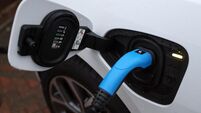Airtricity’s rise and rise leaves criticism blowing in the wind
It has also been attended with controversy.
The supporters of this key form of renewable energy can point to growing indications that global warming is gathering pace, with possibly fearsome consequences for the future of planet Earth.
They can also point to the soaring cost of fossil fuels, a bill that is being fuelled, in particular, by surging demand from India and China, not to mention the energy-guzzling populations of the western world.
Wind energy has its critics, who claim that it is expensive to provide and causes its own forms of environmental damage.
Supply is ‘intermittent’, which means that expensive ‘back-up’ may be required, they point out.
The company’s origins can be traced back to a major falling-out between the former Bord na Móna chief executive Eddie O’Connor and the board’s then chairman, Pat Dineen.
In 1996, under pressure from the Public Enterprise Minister, Michael Lowry, O’Connor quit.
Before long, the man known as ‘Fast Eddie’ had re-emerged as the chief of Future Wind Partnership, an alternative energy company which initially operated out of modest premises in Dublin.
In 1999, O’Connor managed to bring NTR on board as a major shareholder and Airtricity was born.
Since then, the company has grown rapidly.
It has attracted €140 million in total since 1999.
Airtricity now employs 230 people. NTR has a 51% shareholding, while businessman Sean Quinn acquired 16% of the shares for €40m in mid-2004. The company was recently valued at €350m.
O’Connor’s involvement with wind farms can be traced back to his days with Bord na Móna. He credits a board executive, Paul Dowling, with helping to introduce him to the idea.
“The board produced peat, one of the biggest polluters in the universe. I was interested in balancing the ticket,” he said.
Bord na Móna opened Ireland’s first wind farm, at Bellacorick, Co Mayo, in 1992.
The parting of the ways with the semi-state caused pain, but it allowed his instincts as an entrepreneur to flower.
The backing from NTR was crucial.
Ironically, O’Connor’s wind farm dream has been financed in large part from the proceeds of NTR’s toll bridges.
In April, O’Connor opened Ireland’s biggest wind farm. Built in Donegal at a cost of €86m, it consists of 38 turbines.
Now, the company has opened the first phase of what could be a huge development off the Arklow coast, containing the tallest wind turbines in Europe.
There are now 36 wind farms in the Republic, although wind’s contribution to our total energy requirement remains modest at around 2.4%.
The national target is for renewables to account for 13.2% of electricity production by 2020.
Airtricity has fought an uphill struggle to win the backing of the country’s energy establishment and increasingly it has been turning its attention overseas, trading on a growing reputation.
The company now has close to 2,000 megawatts of capacity under development in Britain, its main overseas market. One quarter of this capacity is being created in Scotland in the form of a 173 turbine wind farm, said to be capable of powering the city of Glasgow.
In Ireland, Airtricty expects to have 200 megawatts of capacity in production in the short to medium term.
The authorities here have taken a more cautious view on the prospects for wind energy.
At the end of 2003, the Energy Regulator, Tom Reeves, announced a moratorium on the connection of wind to the national grid in a move that outraged O’Connor.
It had been argued by Kieran O’Brien, the former chief executive of Eirgrid, the State company with responsibility for electricity transmission, that wind provided an unstable form of supply.
O’Connor hit out at what he termed this ‘conservatism’.
He goes further, suggesting that resistance to wind is in large part coming from people interested in protecting entrenched energy monopolies.
Wind sceptics insist that this source of energy requires expensive back up from natural gas stations.
This is the view of Economic Social Research Institute (ESRI) economist, John FitzGerald. In FitzGerald’s view, there is scope to increase the contribution from wind, but he adds, “as wind penetration rises, the costs of backing up the system rise quite rapidly”. The problem is that the wind does not blow all the time, hence the need for back-up.
This view is shared by Eugene Coughlan, director of generation with the Commission for Energy Regulation.
“On an ice cold day in December, you will find that the wind is not blowing. If you have 1,100 megawatts of wind capacity, you need 900 MW of stand-by.
“If you have 2,000 MW, you need 1,800 MW in stand by,” he said.
“That is not to say that wind should be forgotten about.
“It depends on the price of carbon (fossil) fuels.
O’Connor rejects this view. “There is no need to install back-up. The wind blows 95% of the time,” he said.
















